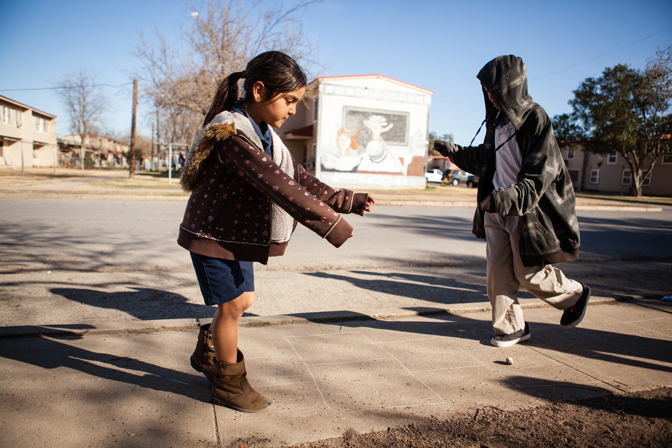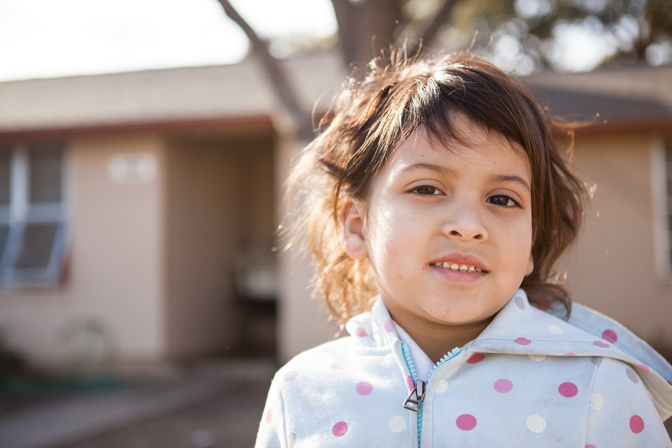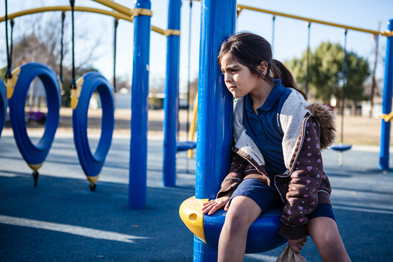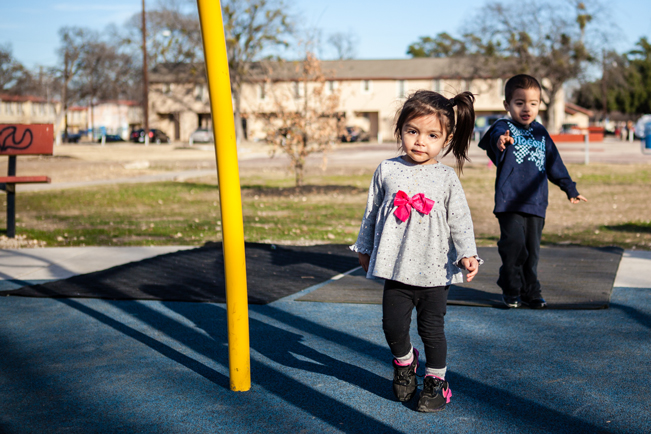Dallas Leads State and Nation In Poverty
Dallas – Leader in Growth and Poverty
Looking at the national economic forecast, we know that Dallas is one of the best performing cities in the  nation. However, in spite of our job growth and low unemployment rate, Dallas is a leader in another economic category, poverty. Of large cities in the state of Texas, Dallas has the largest percentage of people living in poverty.
nation. However, in spite of our job growth and low unemployment rate, Dallas is a leader in another economic category, poverty. Of large cities in the state of Texas, Dallas has the largest percentage of people living in poverty.
Texas Poverty – By City
Here are the numbers. Currently 24% of Dallas’ population, live in poverty. This is only slightly higher than Houston at 23%, El Paso at 22%, and San Antonio, Austin, and Ft. Worth at 20%. Only smaller cities in the Valley fare worse, with poverty hitting close to 40% in cities like McAllen, Brownsville, and 35% in Laredo.
Unfortunately, Dallas is one of the most impoverished cities in the state and nation. And this is a distinction that none of us should be proud of.
The Changing Face of Poverty
The face of Dallas poverty is young, old and diverse. Of the 260,000 Dallas residents in poverty 38% are children, and 17% are seniors. The ethnicity of poverty is 21% Anglo, 30% African-American, 21% Asian, and 30% Hispanic.
For the 1 in 4 Dallas city residents that live in poverty, their annual income is less than $23,050. The problem deepens if we compare that number to rural areas, which have much lower living expenses. For a family of four to make ends meet in rural Nebraska, the income needed is $31,080, that for a city which has half the cost of living of Dallas. Thus, for Dallas, higher waged jobs are critical in ending poverty.
The working poor comprise a large percentage of Dallas’s impoverished citizens. While the unemployment rate in Dallas is at a low of 6.1%, experts say too many in the workforce are paid low wages and have no benefits. One such group, are young Hispanic immigrants, who have higher rates of poverty. These new immigrants make up the 1 in 6 Texas residents who are not reaching their earning potential due to language barriers and lack of credentials. The working poor make up a great deal of the new poverty numbers until they are able to find “living wage” jobs.
 Most of these young immigrants, due to their appreciation of the opportunity in a new nation and work ethic, eventually work their way out of poverty…if given the opportunity. Hispanics make up 41% of Dallas population and is growing annually, which makes “living-wage” jobs critical for the success of Dallas future.
Most of these young immigrants, due to their appreciation of the opportunity in a new nation and work ethic, eventually work their way out of poverty…if given the opportunity. Hispanics make up 41% of Dallas population and is growing annually, which makes “living-wage” jobs critical for the success of Dallas future.
The “New Dallas” and the potential for community transformation
In spite of these bleak numbers, there are signs that Dallas has the foundation, opportunity and desire to make a difference quickly. One such example is West Dallas, where schools have been reclaimed (five elementary schools, one middle school and a high school are producing new results), new affordable housing is being built for first time homeowners (four newer subdivisions that are critical for developing wealth), crime has been reduced, making it one of the safer zip codes in Dallas, and economic revitalization is occurring. Other areas of Dallas, are experiencing similar foundational patterns of community transformation.
Twelve years ago, five men came together in West Dallas, at that time one of the most impoverished zip codes in the nation, and decided to work together to bring change to the 27,000 population landscape. They were Arrvel Wilson of West Dallas Community Church and School, Trey Hill of Mercy Street Ministries (adopts local schools for mentoring), Norman Henry of Builders of Hope(affordable housing for low income families), Ed Franklin of Voice of Hope (feeding and mentoring after school kids) and Randy Skinner of Strategic Justice Initiatives and FEED 3 (strategist for crime, poverty and hunger reduction).
Each of the organizations decided to work together, since the focus of each organization would complement, rather than duplicate the efforts of the others. Thus, the West Dallas Weed and Seed was developed with these five men serving as the executive team that would drive the physical, social, cultural and economic transformation for the next 12 years.
Understanding the logistics of poverty is critical to solving poverty
Only those communities with a strategic plan to end poverty achieve that goal. For Dallas’ 260,000 residents in poverty, 28,000 have no vehicle to reach work, and for many more the mass transit system doesn’t serve areas where low-wage jobs are offered. Those families who receive government assistance, receive around $261 each month, compared to most states assistance of $600.
Job creation has to be strategic and localized to where job training centers, transportation, and incentives can give opportunity. For example, HIS Bridgebuilders, a new nonprofit in West Dallas, not only trains the unemployed or under-employed, but provides a pipeline to the hotel industry for healthy wages. Builders of Hope, also has a mentoring program for the ex-offenders in West Dallas that trains them in the construction industry.
 Education plays a critical role in overcoming poverty. Forty percent of children in poverty are not prepared for the basics of reading, writing, and math skills. They are also more likely to have developmental delays, and learning disabilities. By the end of the 4th grade, African-American, Hispanic and low-income students are already two years behind grade level. By the time they reach the 12th grade they are four years behind.
Education plays a critical role in overcoming poverty. Forty percent of children in poverty are not prepared for the basics of reading, writing, and math skills. They are also more likely to have developmental delays, and learning disabilities. By the end of the 4th grade, African-American, Hispanic and low-income students are already two years behind grade level. By the time they reach the 12th grade they are four years behind.
Thirty-two percent (32%) of Dallas poor are high school dropouts, while twenty-two percent (22%) have a high school degree. Some fifteen percent (15%) of the poor have some college or associates degree, and fiver percent (5%) have a college education.
The nation’s lowest-performing high schools, normally located in impoverished communities, produce fifty-eight percent of all African-American dropouts and fifty percent of all Hispanic dropouts, compared to twenty-two percent of all white dropouts.
Impoverished youth are seven times more likely to drop out in high school, and end up in prison or on welfare. More than 80% of Texas inmates did not finish high school and cost taxpayers $292,000 per inmate when combining the cost of incarceration, lower tax revenues to lower income potential, and providing government benefits such as food stamps and Medicaid.
A working high-school graduate will make $325,000 more than a working high school dropout, over their lifetimes. A worker with some college will make $525,000 more, and an associate degree will earn $725,000 more, while a college degree will earn $1.25 million more. Making sure our children receive a solid educational foundation is morally and fiscally responsible.
Understanding these statistics, Mercy Street Ministries in West Dallas set out to match each elementary school with a mentor that would stay with each child until graduation. More than any other factor, this program has been critical for the success of the five inner city elementary schools succeeding. In addition, Voice of Hope mentoring program, with 300 students each afternoon, sealed the deal on educational success.
Know your community partners, then “market them” to Business Leaders
Understanding that strategic partnerships must be built with local community leaders is the key to success. Strategic Justice Initiatives (SJI) built local community support beginning with 15 leaders (2005), then 30 (2007) then 50 (2009) and then 75 (2012). Working with these community organizers, SJI then brought over 300 business leaders to meet with local leaders and to build partnerships. Over $10 million was given to West Dallas nonprofits during this 2005-2008 period.
SJI, also utilizing its expertise in the criminal justice system and technology, coordinated the buyout of over 325 drug houses from 2005 to 2008 that changed the landscape of criminal activity and shut down two major drug and slum lords.
SJI cast the vision that if these 300 business leaders would adopt West Dallas over the 2005-2008 period and follow their strategic plan that was laid out, real transformation would follow. The alternative? Your tax dollars would go to preparing a bed for these West Dallas dropouts in our state prisons at a cost of $65,000 and at least $18,000 annually to maintain.
Hope for the future
One positive asset that Dallas has compared to other cities is that it has more healthy nonprofits and resources than other Texas cities. Practically every area of our city, where poverty exists, has healthy and strong nonprofit organizations that are taking the lead in tackling hunger, poverty, and educational challenges.
Strong and healthy churches such Cornerstone Baptist Church, Concord Church and Oak Cliff Fellowship are leading the way by confronting historic patterns of family decline and fatherlessness.
 Nonprofits, supported by key business leaders such as Jubilee Center in Fair Park (providing mentoring), St. Phillips School & Community Center in South Dallas (educational support) HIS Bridgebuilders in BonTon of South Dallas (providing job training), Mercy Street and Voice of Hope in West Dallas (providing education and mentoring), Builders of Hope in Pleasant Grove and West Dallas (affordable housing), Reconciliation Outreach in East Dallas ( education, mentoring, re-entry) and FEED 3 in West and South Dallas (poverty, crime, and hunger reduction).
Nonprofits, supported by key business leaders such as Jubilee Center in Fair Park (providing mentoring), St. Phillips School & Community Center in South Dallas (educational support) HIS Bridgebuilders in BonTon of South Dallas (providing job training), Mercy Street and Voice of Hope in West Dallas (providing education and mentoring), Builders of Hope in Pleasant Grove and West Dallas (affordable housing), Reconciliation Outreach in East Dallas ( education, mentoring, re-entry) and FEED 3 in West and South Dallas (poverty, crime, and hunger reduction).
A new DISD superintendent with strong business community support is making it possible for a new generation of educated graduates to succeed. A mayor committed to real economic development in South Dallas will help provide job training, and access to living wages. A new church movement called Greater Dallas Movement Day is working to coordinate the faith community with a viable structure to partner with areas of poverty. Hunger, one of the greatest deterrents to any community success is being tackled with over 100 USDA sponsors and the Dallas Hunger Coalition that changing the hunger landscape.
Real and positive change is happening in Dallas. While the headlines are telling a different story, the state and nation haven’t seen anything yet.
Let’s do something together to change the headlines for our children, our city, our future. If not you, then who?
Want to make a difference? Visit www.feed3.org and learn about our work in feeding over 307,000 meals in 2013, teaching character in local schools, and partnerships with business and churches in impoverished communities.
Please consider a donation at www.feed3.org
Source:
1)Dallas Morning News, Michael A Lindenberger. Feb 2, 2014.
Also, www.dosomething.org Eleven Facts About Education and Poverty.
2)Children at Risk Publication 2012-2014, Poverty, Dropouts, Hunger
3)Economic growth https://www.slate.com/blogs/business_insider/2014/01/11/best_performing_u_s_cities_of_2013_2014.html
Click here to make a donation.
For more information about FEED 3 and partner Strategic Justice Initiatives Inc. summer feeding programs or one of its 27 sites, please contact :
(214) 316-1356
(214) 497-4430
Please feel free to contact us with any additional questions or concerns at any time! We will be happy to assist in any area, and would be delighted to have your organization as a participant within our program this year!
Your tax-deductible gifts can also be mailed to Strategic Justice Initiatives. P.O. Box 222026, Dallas, Texas 75222.
About Strategic Justice Initiatives Inc. - SJI in 2009 became involved in laying the groundwork for the citywide movement called the Greater Dallas Justice Revival. SJI was the parent nonprofit for it till 2011 when its mission of starting 25 school church partnerships, and placement of 700 chronic homeless into housing were accomplished. SJI then launched www.homesforourneighbors.com as the faith partner for Dallas Housing Authority and Metro Dallas Homeless Alliance support of 2000 chronic homeless were placed into permanent supportive housing. www.feed3.org was launched to support the school-church partnerships and hunger projects throughout North Texas. Both efforts carry on the misson of Greater Dallas Justice Revival.
To help end hunger and poverty in our region, please consider a generous donation: Click here:
Give Now












